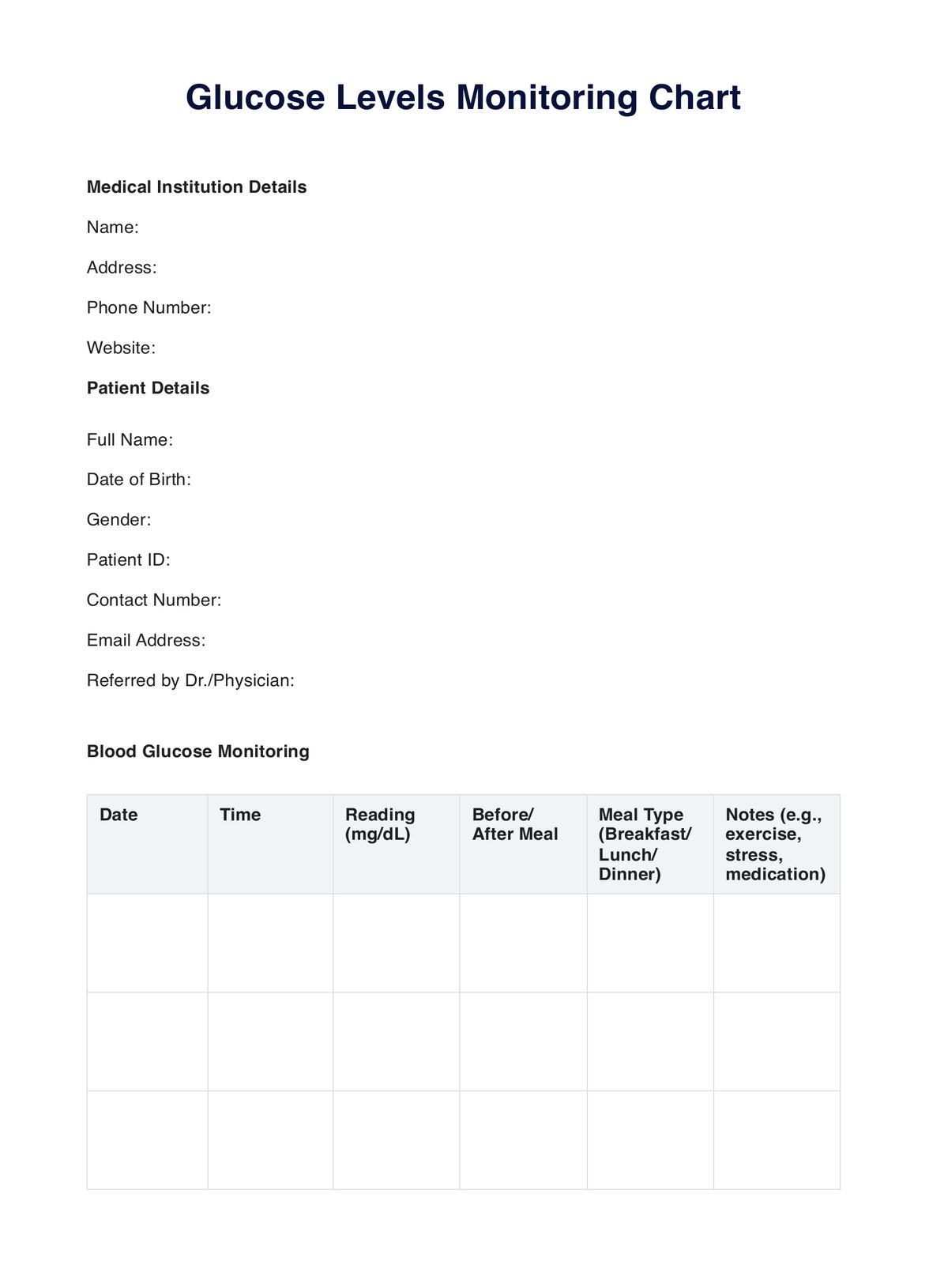Individuals with diabetes, caregivers, and healthcare professionals typically use the Glucose Levels Chart.

Track and manage your blood sugar effectively with Carepatron’s Glucose Levels Chart—a comprehensive guide for optimal diabetes care and informed decisions.
Individuals with diabetes, caregivers, and healthcare professionals typically use the Glucose Levels Chart.
For daily monitoring, during medical appointments, and when making treatment decisions.
Glucose Levels Charts are used to track and analyze blood sugar readings over time.
EHR and practice management software
*No credit card required
Free
$0/usd
Unlimited clients
Telehealth
1GB of storage
Client portal text
Automated billing and online payments